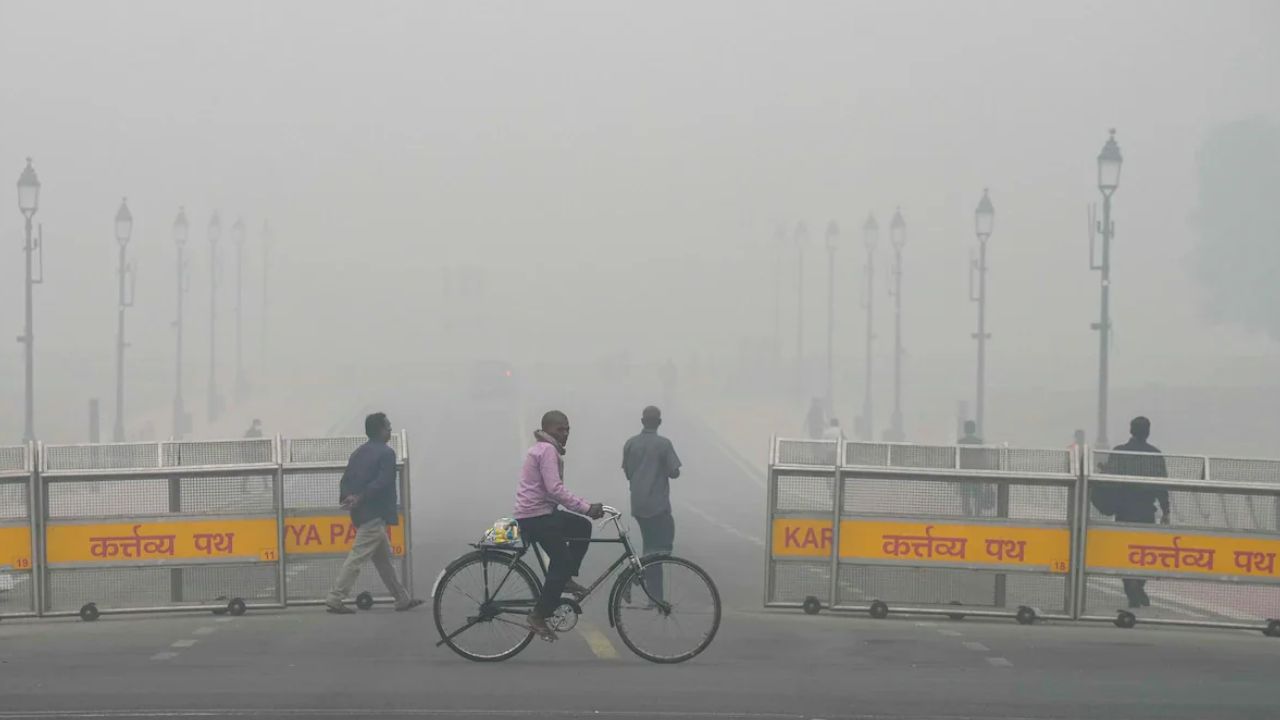 English
English

Delhi-NCR is facing severe air pollution as AQI levels surpass 400 in multiple localities, plunging the region into the “severe” category. Stagnant winds, smog, and seasonal factors have worsened the air quality across Delhi, Noida, Gurugram, and Ghaziabad.

Severe Air Pollution Hits Delhi, Smog Blankets Entire NCR
New Delhi: Air pollution in the capital Delhi has once again risen sharply due to a change in wind direction and reduced speed. Pollution levels, which had been steadily declining over the past few days, have now begun to rise again. Thursday morning began with haze and light fog, while a thick blanket of smog also appeared in the sky. Especially in Ashok Vihar, Jahangirpuri, and other areas, the Air Quality Index (AQI) exceeded 400, which falls directly into the 'severe' category.
According to the Central Pollution Control Board (CPCB) data at 7 am, the AQI was recorded at 354 in Alipur, 408 in Anand Vihar, 417 in Ashok Vihar, 362 in Aya Nagar, and 413 in Bawana. It was 403 in Burari, 408 in Chandni Chowk, 393 in DTU, 416 in Dwarka, and 360 in the T3 area of IGI Airport. Meanwhile, ITO was among the most polluted areas with an AQI of 395, Jahangirpuri 420, Lodhi Road 346, Mundka 436, Najafgarh 316, and Punjabi Bagh 417. Rohini recorded an AQI of 432, Vivek Vihar 407, Sonia Vihar 360, RK Puram 420, and Wazirpur 414.
Delhi Pollution: GRAP-3 lifted across Delhi-NCR; Phase 1 and 2 curbs to remain in force
Air pollution has also reached severe levels in Ghaziabad. Loni recorded an AQI of 425, while Sanjay Nagar recorded an AQI of 290, Vasundhara 305, and Indirapuram 385. Several areas in Noida also recorded AQIs above 400, including Sector 125 at 422, Sector 1 at 405, Sector 62 at 359, and Sector 116 at 438. In Gurugram, NISE Gwal Pahari recorded an AQI of 359, Sector 51 299, Teri Gram 339, and Vikas Sadan 273. In Faridabad, Sector 30 recorded an AQI of 174, New Industrial Town 230, and Sector 11 160.
According to experts, rising pollution levels are common in Delhi-NCR during October and November. This time, several factors have exacerbated the problem. Smoke from stubble burning in neighboring states is further polluting the city's air. Vehicle emissions, construction dust, and industrial smoke are also a constant source of pollution. Weather and geography are also contributing to the increased concentration of pollution. Conditions like cold winds and temperature inversion trap particles near the ground, further worsening air quality.
When pollution levels reached the "very poor" or "severe" category, the Central and Delhi governments implemented the Graded Response Action Plan (GRAP). This included measures such as a ban on construction and polluting activities, vehicle smoke control, and restrictions on industrial emissions. Despite this, the air quality remained unaffected, and people continued to experience breathing difficulties, coughs, and throat and eye irritation. Children, the elderly, pregnant women, and those with lung or heart problems were particularly affected.
Experts believe that long-term policy reforms, along with immediate measures, are essential to improve air quality. These strategies include planting trees, improving public transportation, controlling construction and industries, and preventing stubble burning. Currently, air pollution in Delhi and the NCR has become a serious health crisis that cannot be ignored.